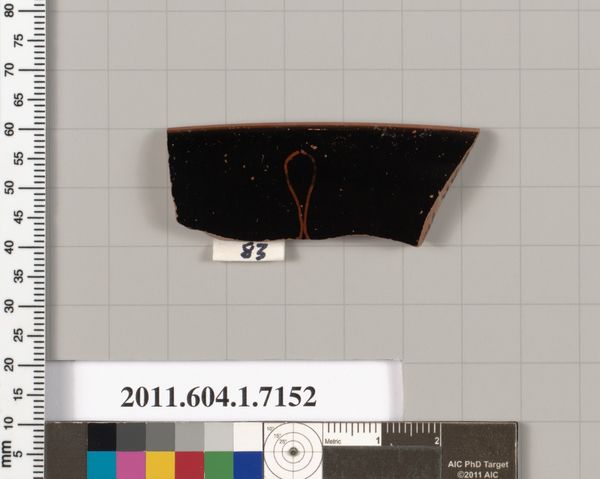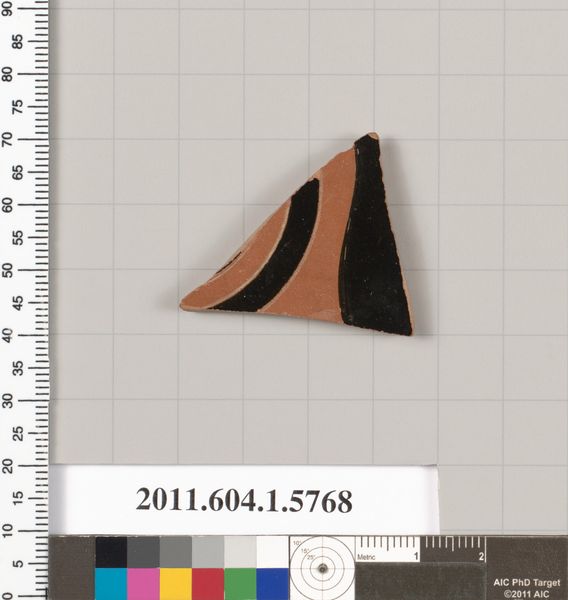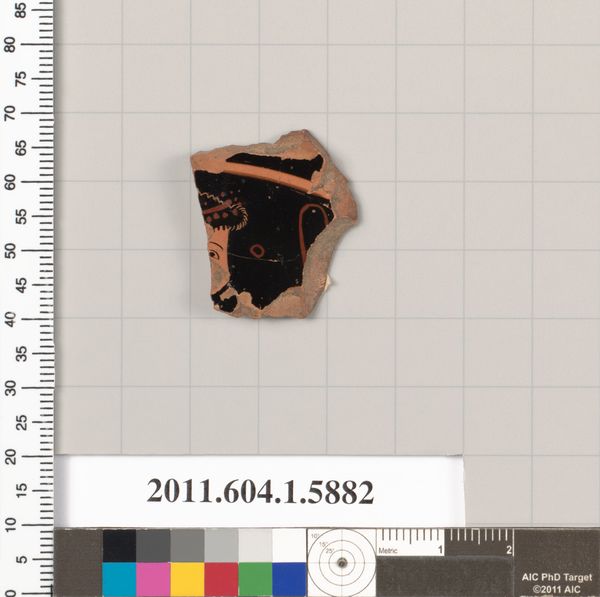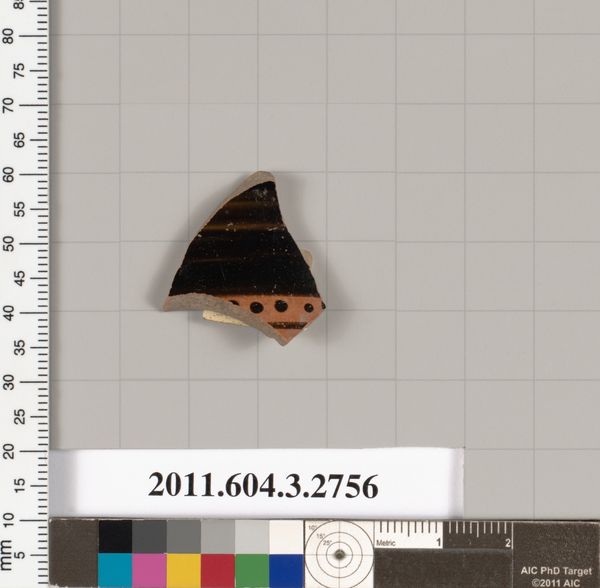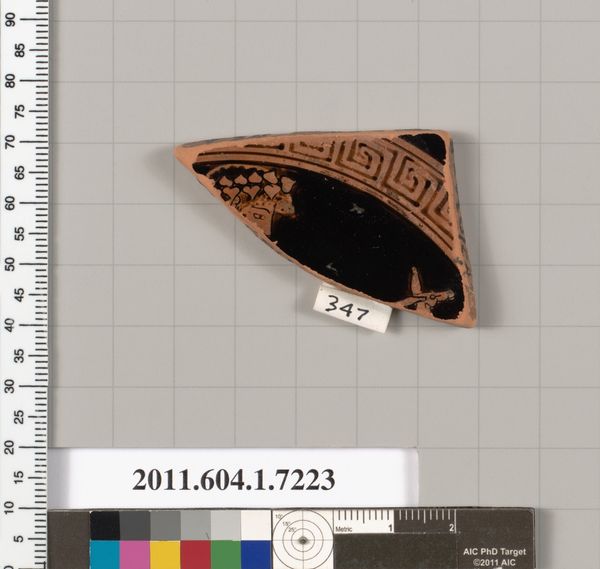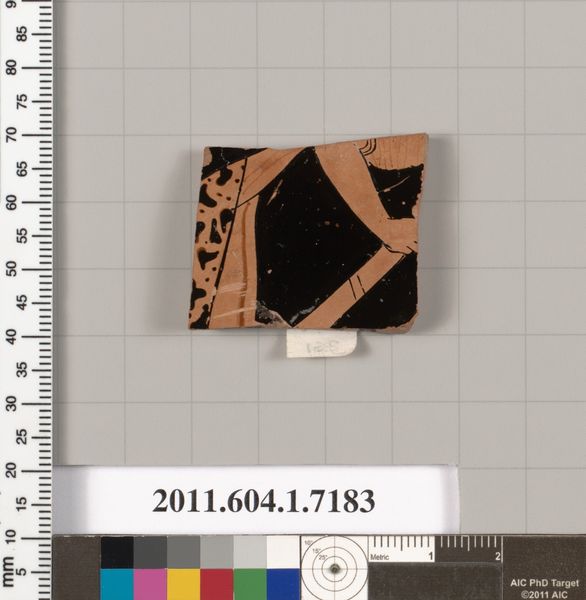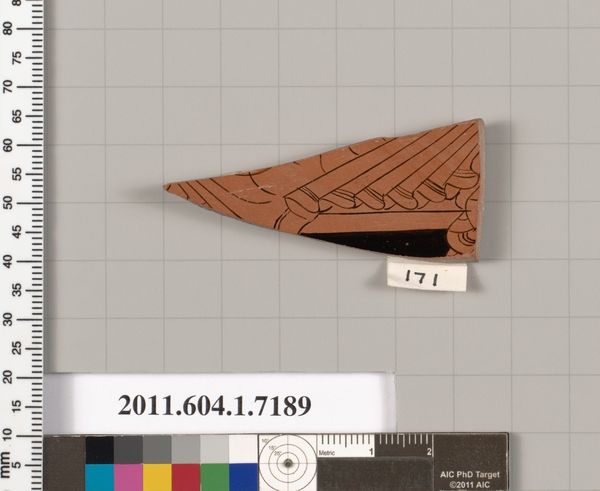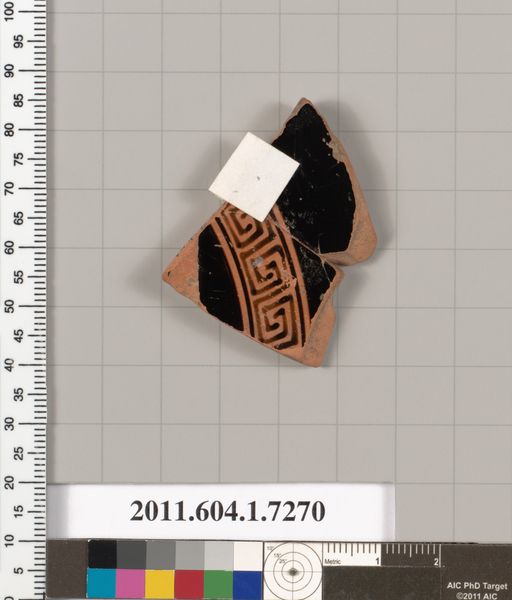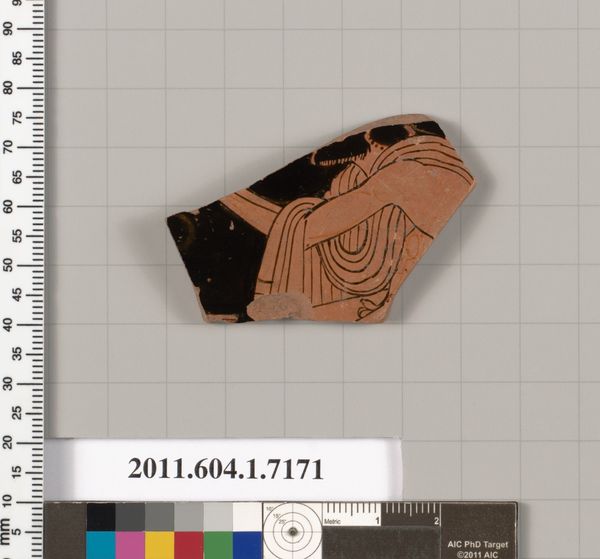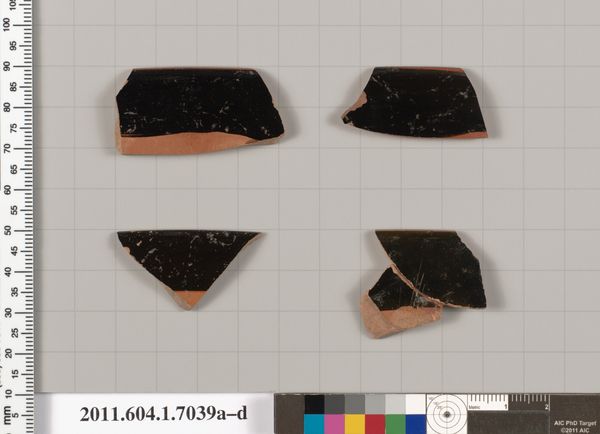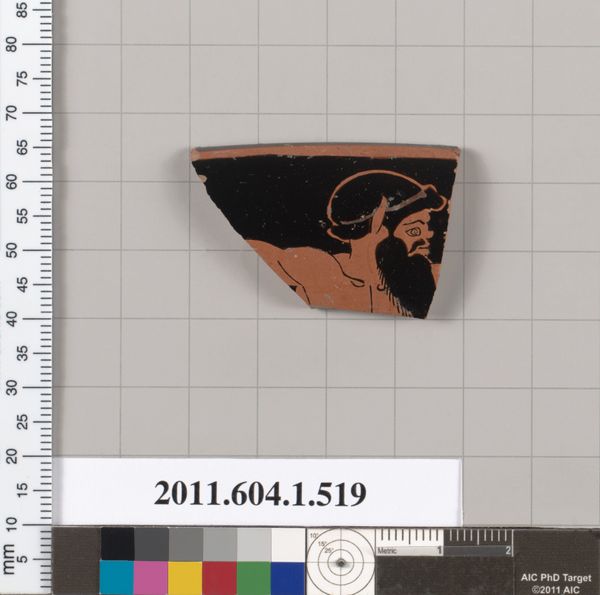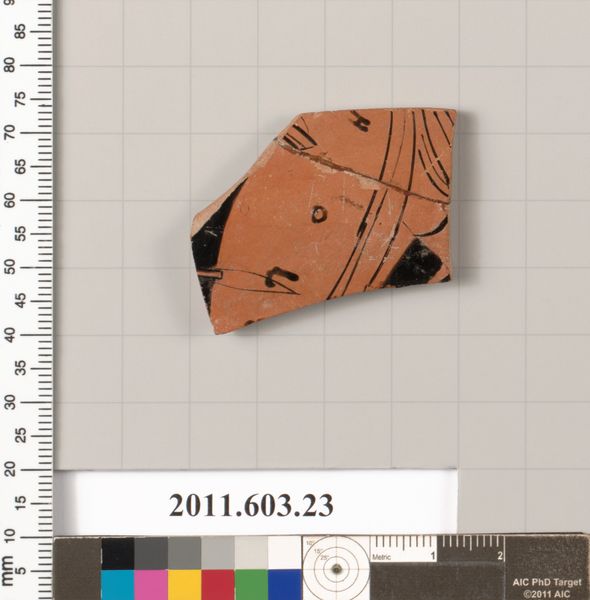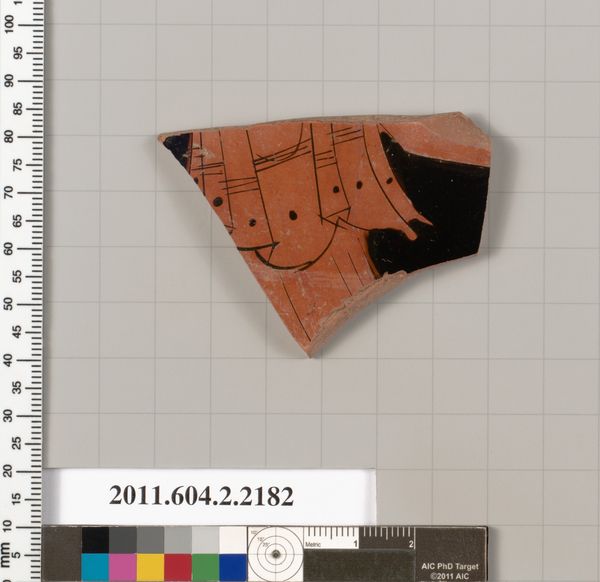
drawing, ceramic
#
drawing
#
greek-and-roman-art
#
ceramic
#
vase
#
roman-art
#
geometric
#
ancient-mediterranean
#
line
Copyright: Public Domain
Curator: Let’s dive in. What catches your eye about this fragment of a kylix, a drinking cup, crafted by Makron around 530 BC? It's currently housed in the Metropolitan Museum of Art. Editor: The first thing that struck me is the use of materials: the terracotta, that rich earthiness paired with the stark black glaze. What survives seems both fragile and durable. It also looks very...geometric. How would you interpret the maker's vision using such rudimentary media? Curator: Consider the process, the labor involved. Each kylix was hand-formed, shaped on a wheel, and painted with remarkable precision, wasn’t it? We see a dedication to refined detail achieved via black-figure decoration that had been perfected and standardized over decades in countless Athenian workshops. Note the careful rendering of what’s remaining on this shard, the even glaze, and the sharp delineation of form achieved through expertly applied slip, refined and altered through successive firings. Do these technical skills tell us more about the artist? Editor: So, less about individual artistic expression and more about collective skill and specialized work, essentially mass production by ancient means. It begs the question - was there any intention other than use, production, and profit? Curator: Exactly! What value do we give functional objects of beauty? Think about the societal function of this cup. Was it truly 'art' as we conceive of it today, or a highly crafted, culturally significant object circulating within a specific economy? Are these mutually exclusive? How does our separation of 'art' and 'craft' blind us from an appreciation for the skills, methods, and circumstances involved? Editor: I see what you mean. Looking at it that way, the fragment transforms from just a broken piece of pottery to evidence of an entire production system. A window onto labor. Curator: Precisely. And isn't it fascinating how this fragment, through its materiality and the traces of its making, can spark so much discussion?
Comments
No comments
Be the first to comment and join the conversation on the ultimate creative platform.
